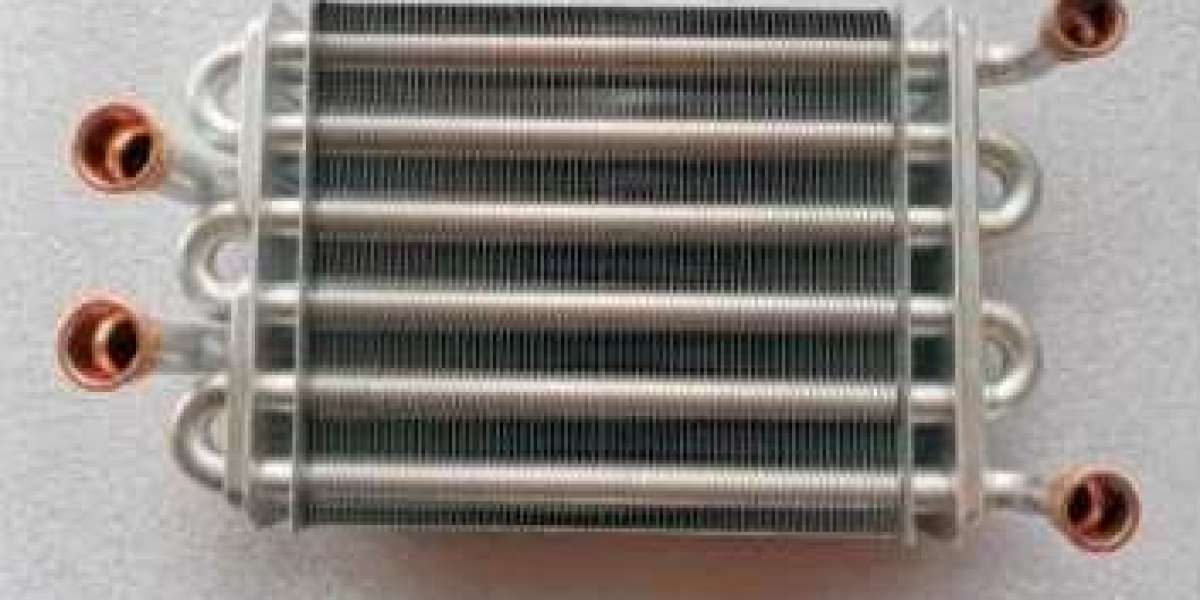A wall furnace is a type of heating system that is both efficient and space-saving, providing warmth to homes and offices with minimal intrusion on the living space. At the heart of this system is the heat exchanger, a critical component that ensures the safe and effective transfer of heat from the combustion process to the surrounding air. In this blog post, ISAAC will provide you with the working principle of wall furnace heat exchanger, its components, and the technology that makes it an efficient heating solution.
Introduction to Wall Furnaces
Before we delve into the heat exchanger, let's understand what a wall furnace is. A wall furnace is a compact heating appliance designed to be mounted on a wall, typically in a utility room or basement. It uses fuel such as natural gas, propane, or oil to generate heat. The heat is then distributed throughout the building via a duct system or by directly heating the room where the furnace is located.
The Role of the Heat Exchanger
The heat exchanger in a wall furnace is akin to the heart in the human body—its function is central to the system's operation. Its primary role is to transfer heat from the combustion gases to the air that is circulated throughout the building. This process is crucial for maintaining efficiency and safety.
Components of a Heat Exchanger
1. Primary Heat Exchanger (PHX): This is the first and most critical component of the heat exchanger. It is where the initial heat transfer from the combustion gases to the air takes place.
2. Secondary Heat Exchanger (SHX): Some wall furnaces feature a secondary heat exchanger to capture additional heat that may have escaped the primary exchanger, thus increasing the overall efficiency of the system.
3. Baffles: These are internal partitions that guide the flow of combustion gases and air, ensuring maximum contact and heat transfer.
4. Flue Gas Exit: The flue gas, which is the byproduct of combustion, exits the heat exchanger through this component. It is designed to withstand high temperatures and to prevent any leakage of harmful gases.
5. Air Inlet and Outlet: These are the points where cool air enters the heat exchanger and where heated air exits to be circulated throughout the building.

How the Heat Exchanger Works
1. Combustion Process: The process begins with the combustion of fuel in the burner section of the furnace. This combustion generates hot gases.
2. Heat Transfer: The hot gases flow through the primary heat exchanger, where their heat is transferred to the air or water that will be circulated to heat the building.
3. Gas Flow and Baffles: Baffles within the heat exchanger help to direct the flow of gases and increase the surface area for heat transfer, ensuring that the gases are cooled before they exit the system.
4. Secondary Heat Exchange (if present): In systems with a secondary heat exchanger, the gases pass through this additional component to capture more heat, further improving efficiency.
5. Flue Gas Exit: The cooled combustion gases, now mostly composed of water vapor and carbon dioxide, exit the heat exchanger through the flue gas exit and are vented outside the building.
6. Air Circulation: The now heated air is circulated through the building via a duct system or by natural convection, raising the ambient temperature.
Efficiency and Safety Features
- Efficiency: Modern wall furnace heat exchangers are designed to maximize heat transfer and minimize energy loss, often achieving high efficiency ratings.
- Safety: Safety is paramount in the design of heat exchangers. They are built to withstand high temperatures and pressures, and are equipped with safety controls to shut down the system in case of malfunction.
- Materials: Heat exchangers are typically made from materials with high thermal conductivity and resistance to corrosion, such as stainless steel or aluminum alloys.
Maintenance and Lifespan
- Regular Maintenance: To ensure the longevity and efficiency of the heat exchanger, regular maintenance is required. This includes cleaning the heat exchanger surface, inspecting for cracks or damage, and checking the integrity of the flue gas exit.
- Lifespan: With proper care, a heat exchanger can last for many years, often outlasting the expected lifespan of the entire furnace.
Conclusion
The wall furnace heat exchanger combines efficiency, safety and compact design. Understanding how it works not only helps us understand the technology behind the heating system but also helps maintain its optimal performance.








